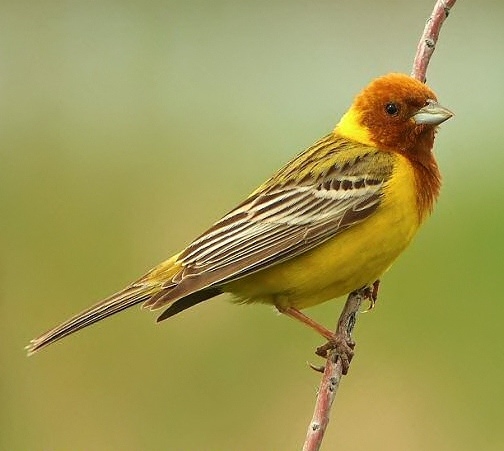 |
| Photo by Audevard Aurelien (Mango Verde) |
Common name:
red-headed bunting (en); escrevedeira-de-cabeça-ruiva (pt); bruant à tête rousse (fr); escribano de cabeza roja (es); braunkopfammer (de)
Taxonomy:
Order Passeriformes
Family Emberizidae
Range:
This species is found breeding in central Asia, from southern Russia and Kazakhstan to northern Iran and Afghanistan. They migrate south to winter in India.
Size:
These birds are 16-17 cm long and have a wingspan of 25-28 cm. They weigh around 25 g.
Habitat:
Red-headed buntings are found in open habitats, such as grasslands and steppes, scrublands, semi-desertic areas and oasis, and also in arable land. They occur from sea level up to an altitude of 2.000 m.
Diet:
They feed on the ground, mainly eating seeds and other plant material, but during the breeding season insects and other invertebrates become an important part of their diet.
Breeding:
Red-headed buntings breed in May-July. The nest is a loose structure made of cereal stems and grasses, placed close to the ground in a dense or thorny shrub, vine or fruit tree. The female lays 3-6 eggs, which she incubates alone for 10-14 days. The chicks fledge 2 weeks after hatching.
Conservation:
IUCN status – LC (Least Concern)
This species has a very large breeding range. There is no information on population size, but the population is suspected to be stable in the absence of evidence for any declines or substantial threats.







